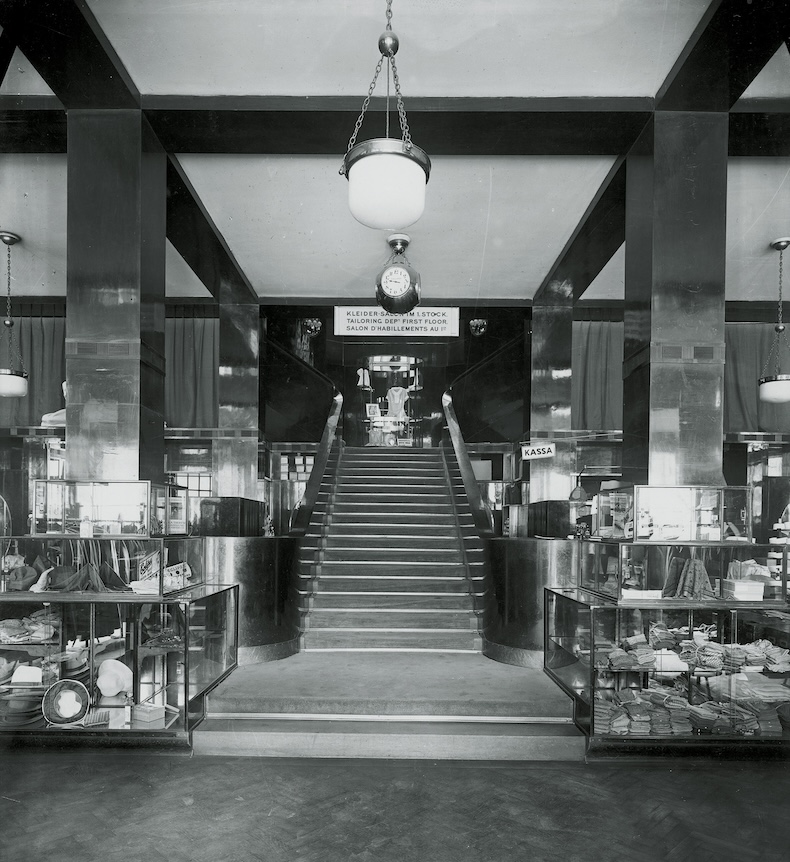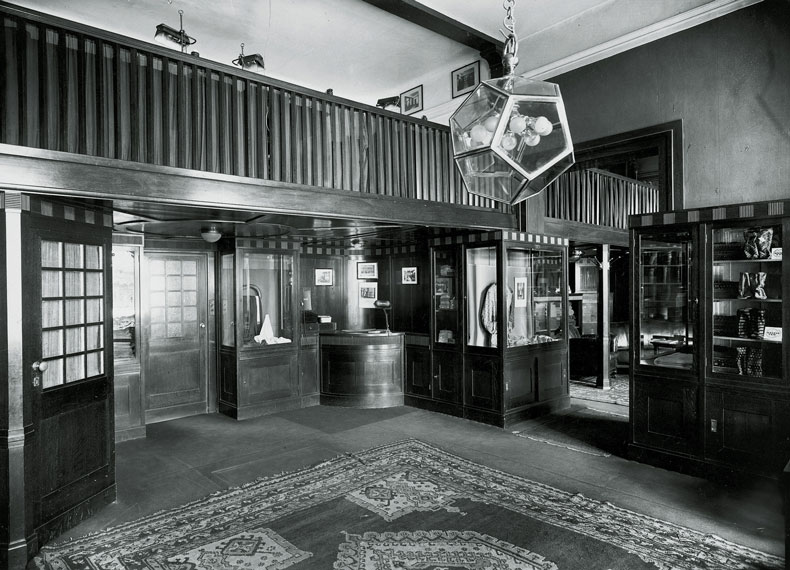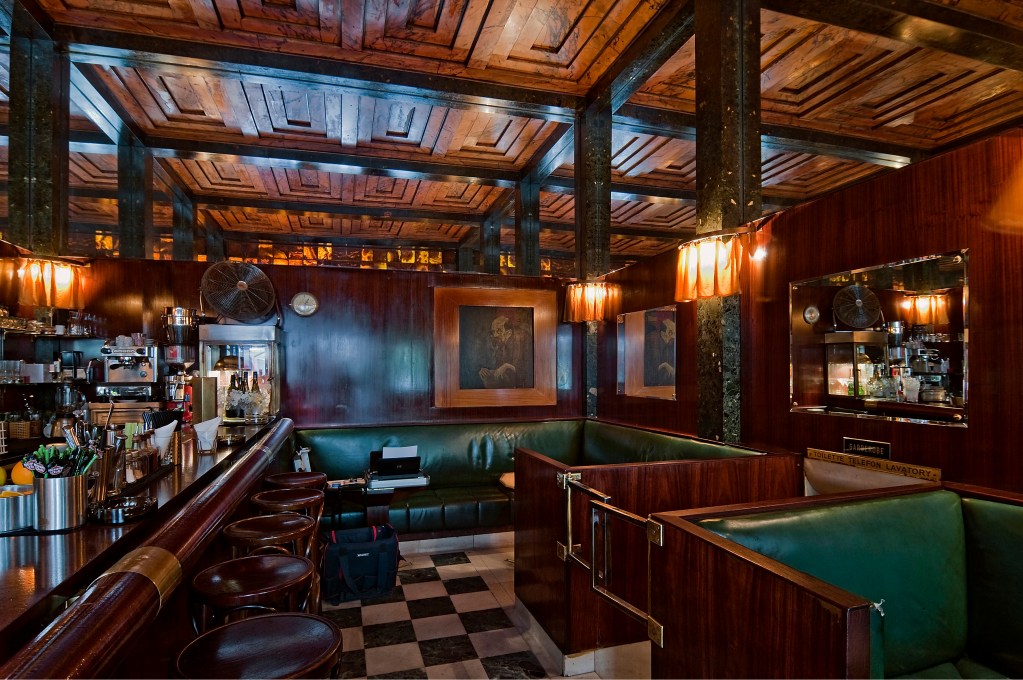From the November 2025 issue of Apollo. Preview and subscribe here.
Of all architectures the shopfront is probably the most vulnerable, the most sensitive to changes in fashion and finance. It might strike you as surprising, then, that the shopfronts designed by Adolf Loos in Vienna more than a century ago mostly survive almost intact. Or you might just think, well, that’s Vienna, the city of astonishing stasis, of untouched cafes and rococo chambers un-
altered for centuries.
Possibly, though, it is because they are perfect. Loos was a brilliant architect, a withering critic, a fine writer and, unfortunately, a paedophile. He was taken to court after being accused of sexually assaulting three young girls who sat for him as nude models. Only his connections and status in the city allowed him to walk free. For us it taints everything he did, of course, but his work has arguably lasted better than that of any other proto-modern architect and is still profoundly influential.
Nowhere is this more obvious than in his astonishing Kärntner Bar (or American Bar, 1907), a tiny cocktail joint with a coffered marble ceiling and mirrored walls, timber booths and banquettes and theatrically under-lit marble-topped tables. It is maybe my favourite interior anywhere. I can’t think of anyone who has ever done it better. And it’s not just me: there’s a replica of the space in the senior common room at Trinity College Dublin, installed by architects de Blacam and Meagher in 1985.
Loos designed the bar as a riposte to the elaborate Secessionist and rococo whipped-cream cafes that stuffed Vienna’s centre. He is now probably chiefly known for the title of an essay, ‘Ornament and Crime’ (1908), which is actually a far more nuanced text than generally realised. Loos suggested that the work of craftsmen in adorning their work was reasonable but that the application of decoration by the bourgeoisie was decadent. It is a surprise to some, then, that his interiors can be almost suffocatingly rich, not in surface decoration but in material and density of design. Here a coffered, layered marble ceiling creates a compressive intimacy and something of a tomb about the place. Mirrors high up on the wall introduce an element of deceit, an uncertainty about depth and scale, expanding the tiny interior infinitely as if the space continued above a screen.
Loos’s most controversial design was for the Goldman & Salatsch store on Michaelerplatz (1909–11). The controversy was precisely about its lack of adornment (one cartoonist portrayed it as a gridded drainhole cover). Emperor Franz Joseph apparently always used another entrance to his palace opposite just to avoid looking at it. But the interior, though less familiar, was equally intriguing: a rich, dark, veneer-encased series of interlocking, complex spaces stripped of the decorative appliqué characteristic of the era. The vitrines form a kind of glass cityscape, a Manhattan skyline of crystal, a city in a city. The interiors were destroyed in 1938 but later reconstructed.

His smaller stores are more intense, their scale amplifying the incredible richness of material and spatial composition. Nowhere is this better seen than at Knize (1909–13), also, remarkably, still functioning as it did in Loos’s day. This gentlemen’s outfitters clearly takes a lot from London. It is reminiscent of Savile Row’s functional and elegant interiors (mostly now disappeared) or Jermyn Street’s shops with their mix of gentlemen’s club, showroom and workshop. Loos was an admirer of English tailoring – he cited its practicality and relative austerity, the codes of the suit, with the foppishness of Continental tailoring – and the interior of this remarkable store on Vienna’s Graben feels very much like the interior of a wardrobe. Loos plays with surface here as a skilled tailor might play with fabric. The black granite on the front of the store is curved, creating something between a pair of columns framing the shopfront and a pair of curtains imparting a theatrical air. These are then pierced by two vitrines which undermine that solidity. It’s a shopfront which looks arguably more radically contemporary than any contemporary counterparts and it survives intact.

Loos’s most famous commercial interior did not survive. The Café Museum, with its stripped, white interior and shallow vaulted ceilings, often appears alongside Secessionist interiors by, among others, Josef Hoffmann (whose work Loos detested) and the cafe was close to the Secession building. But it was something very different. It came to be known as the Cafe Nihilismus, apparently much to Loos’s delight. The black, punched windows in the white rendered facade (no sills or mouldings) appeared shocking at the time. Inside, the only adornment appears to be brass strips running across the vaulted ceiling but even these turn out to be electric conduits. The chairs here were basic Thonet models, like those in any cafe.
That most of these works survive is almost unbelievable. Shops are always the most ephemeral of designs. Yet here they are. You might suggest that some of that is due to Loos’s impeccable taste and talent. Or you might suggest that it is because Vienna is a city in which things manage to endure – just look at the cafes which function perfectly well today, yet date back to the 1950s, 1920s or even 1890s. (Try to think of a single cafe in London that has survived even half that time.) It may also be that many of these institutions stay with single families for generations and become part of the social as well as cultural fabric of the city. It is also, perhaps, because Loos’s designs were never exactly fashionable. They were always shot through with a dose of acerbic wit and impudence. They looked permanent and they manifested their own survival against the fripperies of their contemporaries. Probably it is all of these and it is a kind of miracle. Loos’s commercial interiors are the epitome of the emerging modern civilised metropolis. The city as a place defined by solid, intriguing storefronts and complex, exquisite interiors which surprise, delight and seduce. The ephemerality of consumption refined into something like permanence.
From the November 2025 issue of Apollo. Preview and subscribe here.
